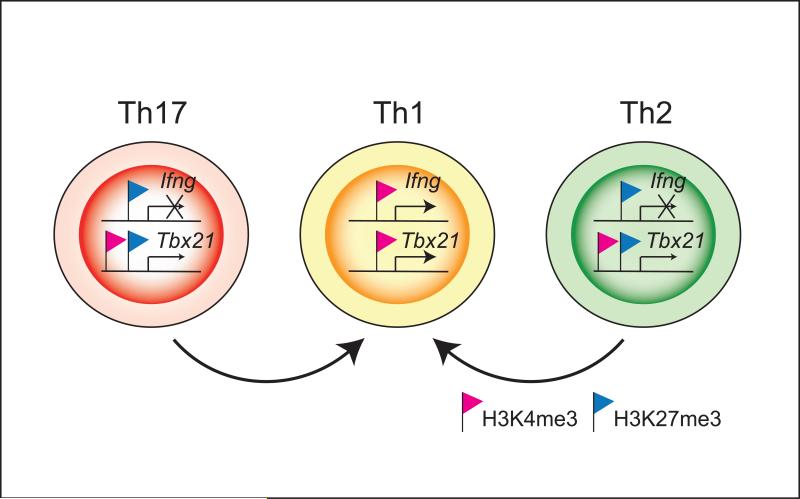Figure 2.
Epigenetic status of lineage specific cytokine and transcription factor gene loci in helper T cell subsets. H3K4me3 (red flag) and H3K27me3 (blue flag) modifications on Ifng and Tbx21 loci in Th1, Th2 and Th17 cells are shown. Consistent with the selective expression of IFN-γ in Th1 cells, the Ifng gene displays H3K4me3 (permissive) marks in Th1 cells accompanied by H3K27me3 (repressive) marks in Th2 and Th17 cells. The Tbx21 gene is associated with permissive H3K4me3 marks in the absence of H3K27me3 marks in Th1 cells. Although, repressive H3K27me3 marks are present in Th2 and Th17 cells, H3K4me3 marks are also present. The Bcl6 gene is another example where accessible marks are maintained. Such bivalent epigenetic modifications on master regulator may functionally contribute to helper T cell plasticity. Thus, the epigenetic modifications provide explanations for elements of stability (e.g. cytokine genes) that coexist with modes of plasticity (e.g. master regulators genes) within the same subset of helper cells.

